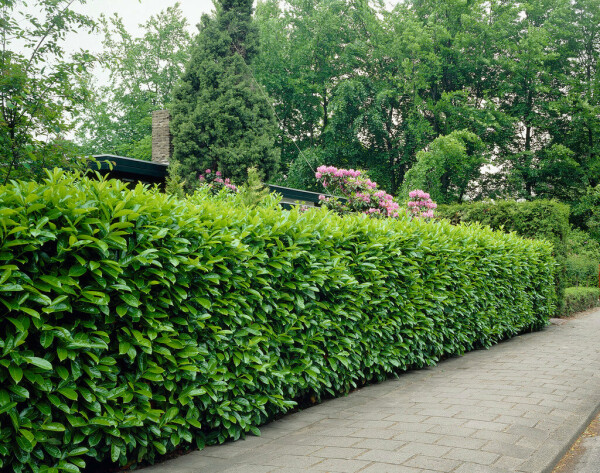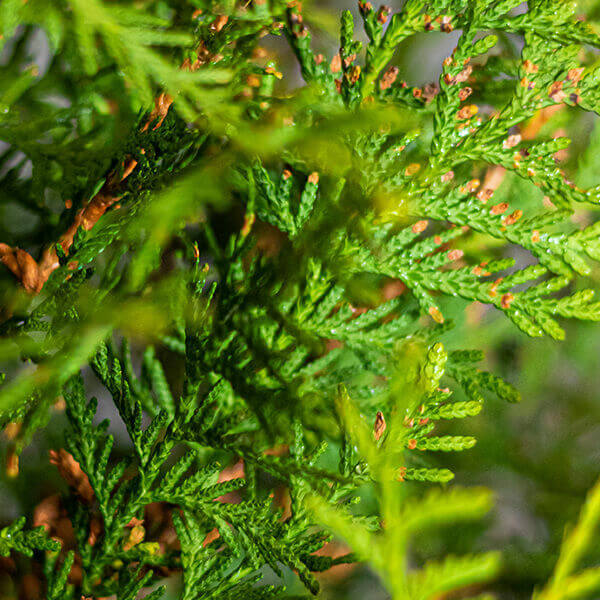Drought-tolerant Hedging Plants
Drought-tolerant Hedging Plants
Blog Article
Best Hedge Plants For Sun And Shade
Improve your garden's attraction with rich hedge varieties such as Yew (Taxus), Thuja, Laurel, Photinia, and Bamboo, celebrated for their structural stability and environmental advantages.
Yew and Thuja offer evergreen protection and winter season durability, while Laurel uses rapid growth and broad, aromatic leaves.
Photinia adds seasonal appeal with its lively red foliage, and Bamboo lends a low-maintenance, peaceful atmosphere.
These hedges improve air quality, minimize sound, and create tranquil, private areas.
Correct planting, spacing, and maintenance guarantee energetic growth and ecological consistency.
Explore how these lush varieties can raise your garden's appeal and well-being.
Key Takeaways
Change Your Garden With Lush Hedge Ranges
- Select Yew for its thick, evergreen growth and unparalleled longevity.
- Go with Laurel for its quick growth and broad leaves, ensuring quick personal privacy.
- Pick Photinia for its lively seasonal foliage, which turns a striking dark red.
- Utilize Bamboo for a low-maintenance, winter-hardy hedge with aesthetic appeal.
- Space plants 2-3 per meter and prune frequently for optimum development and health.
Popular Hedge Plants
When transforming a garden with lush hedge varieties, it's necessary to consider popular hedge plants such as Yew, Thuja, Laurel, and Photinia due to their distinct qualities and advantages.
Yew (Taxus) is extremely respected for its durability and dense, green growth, making it a prime choice for withstanding landscapes.
Thuja is noted for its evergreen foliage and robust winter resilience.
Photinia adds seasonal vibrancy with red leaves that darken over time, creating vibrant visual appeal.
Laurel uses quick development and aromatic, broad leaves, suitable for quick privacy.
Additionally, Bamboo is an excellent option for atmosphere, providing a low-maintenance, winter-hardy option that boosts the garden's visual with its sophisticated, swaying walking sticks.
These selections cater to a range of horticultural requirements and preferences.
Benefits of Garden Hedges
Garden hedges use a wide variety of benefits, making them a valuable addition to any landscape. These natural barriers are cost-efficient to carry out and offer significant wind defense, improving air flow and contributing to sound reduction. The thick foliage of hedges like Thuja and Beech guarantees privacy by blocking exposure, creating a tranquil and secluded environment.
Hedges also play an important role in microclimate guideline, supplying a stable environment that fosters plant development and minimizes temperature level fluctuations. Their detailed leaf structures filter contaminants, enhancing air quality and contributing to a much healthier garden ecosystem.
Moreover, hedges stand out in noise reduction, soaking up and deflecting acoustic waves to lower ambient noise levels. This dual performance of providing both visual and acoustic personal privacy enhances the total tranquility and visual appeal of any garden.
Planting and Maintenance Tips
For a successful hedge, careful preparation of the planting area is important. Make sure the soil has correct pH and drainage to support strong root advancement.
Space the plants properly for the picked species. Water the hedge often throughout its initial growth phase, changing as required with seasonal changes.
Execute a organized bug control and disease prevention technique, utilizing natural or chemical treatments when required. Frequently check for aphids, mites, and fungal infections.
Apply mulch to keep wetness and reduce weeds. Seasonal pruning promotes dense growth and air flow, vital for plant health.
Following these standards will assist you cultivate a lively, well-kept hedge that improves the beauty of your garden.
Spacing and Trimming Guidelines
Spacing and Trimming Guidelines
Appropriate spacing and cutting are important for cultivating healthy, aesthetically appealing hedges. Appropriate spacing makes sure each plant gets enough nutrients, light, and air flow.
Follow these standards for ideal hedge upkeep:
- Spacing: Position hedge plants 2-3 plants per meter to motivate robust growth.
- Pruning Methods: Regular pruning is important for maintaining desired hedge height and shape. Trim brand-new development in summer and cut back older wood throughout winter season.
- Seasonal Care: Change cutting techniques and schedules according to seasonal requirements to guarantee plant health.
- Hedge Height: Regularly monitor and cut to keep the preferred hedge height and attain consistent aesthetic appeals.
Adhering to these actions will guarantee your hedge grows, boosting both the appeal and performance of your garden.
Selecting the Right Hedge
Choosing the Right Hedge
Picking the suitable hedge involves examining elements such as mature height, foliage density, and ecological durability. Successful hedge plant choice requires comprehending each species' growth attributes and site-specific adaptability.
For instance, Yew (Taxus) provides excellent durability and dense development, while Thuja is notable for its winter season resilience. In addition, thinking about maintenance requirements is crucial; fast-growing types like Laurel or Privet demand routine trimming, whereas low-maintenance options like Bamboo or Ivy may be more suitable for those seeking very little upkeep.
Environmental aspects such as soil type, light accessibility, and wetness conditions ought to likewise assist the selection procedure. This careful method ensures the selected hedges will grow, offering both functional and visual benefits to the garden landscape.
Delivery and Planting Suggestions
To ensure your hedge plants prosper, they need to be delivered by specialized couriers and planted without delay upon arrival.
Follow these essential steps for effective planting:
- Soil Preparation: Improve the soil with organic matter to improve drain and nutrient material.
- Planting Depth: Create a trench twice the width and equal to the depth of the root ball.
- Watering Strategies: Water completely after planting, keeping the soil consistently moist but not saturated.
- Mulching: Use a layer of mulch to maintain wetness and suppress weeds.
Client Assistance and Service
Provided the vital function of timely assistance in horticultural pursuits, our client support team is offered 6 days a week through telephone, e-mail, and social networks to use expert advice and swiftly deal with any concerns. Their commitment to quick reaction times guarantees client satisfaction by dealing with inquiries associated with plant health, ideal planting techniques, and maintenance schedules.

Action Time
Social network
This extensive support system, reinforced by an outstanding 9.3/ 10 client ranking, highlights our dedication to boosting the gardening experience for every client.
Frequently Asked Questions
For How Long Does It Take for Hedge Plants to Establish?
Hedge plants typically require one to three years to become completely developed, with the precise duration varying by species and growing conditions.
Effective care during this critical period is essential for robust development. Constant watering, alert weed control, and proper fertilizer application are essential in promoting strong root advancement.
For example, fast-growing species like Laurel may develop quicker, while slower-growing ranges such as Yew may take longer. Persistent maintenance accelerates the establishment process, resulting in healthy and thick hedges.
What Are the very best Hedge Plants for Personal Privacy?
The question of the very best hedge plants for privacy includes assessing evergreen and deciduous choices.
Evergreen hedges like Thuja, Laurel, and Cypress provide year-round protection, making sure constant privacy.
On the other hand, deciduous hedges such as Beech use seasonal privacy, shedding leaves in colder months.
Secret upkeep suggestions for privacy hedges consist of regular trimming, fertilizing in spring, and correct spacing-- usually 2 to 3 plants per meter.
Additionally, constant watering and persistent weed removal are vital for promoting healthy, dense development.
Can Hedge Plants Draw In Wildlife to My Garden?
Yes, hedge plants can attract wildlife to your garden by providing vital benefits like shelter, food, and nesting websites, consequently boosting regional biodiversity. Yew, holly, and laurel are exceptional for drawing in birds, while ivy supports a range of insects.
However, it's essential to keep in mind that there are some downsides, such as increased maintenance to manage insects and routine maintenance. Thoroughly picking and maintaining hedge varieties can help balance these benefits and disadvantages, eventually cultivating a lively and sustainable ecosystem in your garden.
Are There Any Blooming Hedge Plants Available?
Yes, there are flowering hedge plants available that can improve the appeal of your garden.
For example, Elaeagnus, also understood as Olive Willow, produces aromatic white flowers in the fall, adding a touch of beauty.
Photinia, another popular option, showcases lively red leaves that mature into a rich green, developing a vibrant visual result throughout the seasons.
To ensure these plants flourish, it's necessary to practice correct pruning strategies and seasonal maintenance, such as trimming new growth in the summer and cutting back in the winter season.
These procedures will assist maintain the health and aesthetic appeal of your blooming hedges.
How Do I Prevent Pests in My Hedge Plants?
To prevent insects in hedge plants, utilize natural insect control approaches and keep correct hedge care. Present beneficial insects like ladybugs, which prey on harmful pests, to create a balanced ecosystem.
Regularly inspect your hedges for indications of problem and quickly eliminate any affected parts to prevent the spread. Make sure the health of your hedges by using well balanced fertilizers and offering sufficient water.
Utilize mulching to retain soil moisture and correct spacing to lower plant tension and promote robust development. These practices collectively help in reducing pest issues and keeping a healthy hedge.
Conclusion
In essence, picking the best hedge ranges such as Yew, Thuja, and Laurel can transform any garden into a peaceful haven. These plants supply year-round plant, enhance visual appeal, and deal useful advantages like noise reduction and wind security.
Correct planting strategies, precise spacing, consistent watering, and seasonal trimming are vital for ideal growth.
Trustworthy shipment services and expert customer assistance guarantee a seamless experience from purchase to planting, making it easier than ever to raise your outdoor space.
Garden hedges provide a plethora of advantages, making them a valuable addition to any landscape. These natural barriers are cost-effective to get more info carry out and offer considerable wind defense, improving air blood circulation and contributing to sound reduction. The thick foliage of hedges like Thuja and Beech guarantees personal privacy by obstructing visibility, developing a peaceful and secluded environment.

Pruning Methods: Routine pruning is vital for preserving preferred hedge height and shape. Trim new growth in summer season and cut back older wood throughout winter season.
Report this page